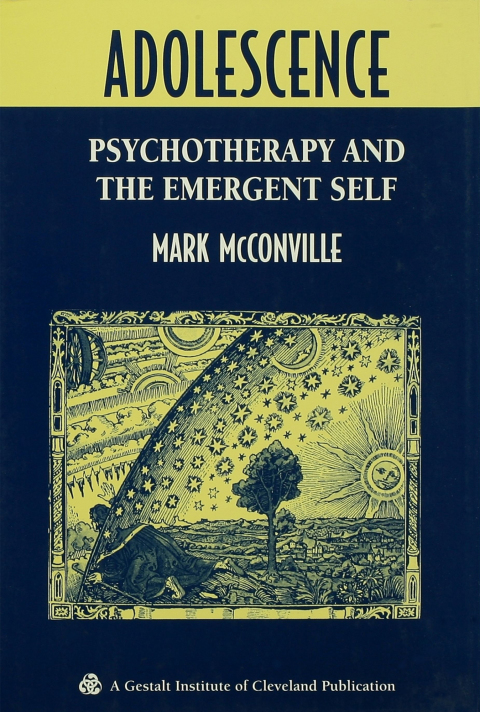Description
Efnisyfirlit
- Cover Page
- Half Title page
- Title Page
- Copyright Page
- Dedication
- Contents
- Preface
- Searching for a Model
- Overview of This Book
- Acknowledgments
- The Author
- Part I Adolescent Development: A Tasks Model
- 1 A Framework for Adolescent Development
- The Evolving Contact Boundary
- The Gestalt Notion of Self
- Intrapsychic and Interpersonal Contact Boundaries
- 2 The Child Self and the Family
- The Family as a Field
- Field Forces and the Family Milieu
- The Contribution of Family Therapy Theory
- The Contribution of Gestalt Therapy Theory
- Embedded Experience
- Differentiation and Embeddedness
- Introjection
- Intrapsychic and Interpersonal Field Process in Childhood Experience
- The Child Self
- Case Example
- 3 Reorganizing the Interpersonal World
- Disembedding the Self
- Contact Boundaries
- Boundaries as Separation
- Boundaries as Connection
- 4 Taking Ownership of the Self
- Appropriating Sensory Experience
- The Synthesizing Function of the Self
- Synthesizing the Self
- Owning and Disowning
- Owning and Identity
- The Self as New Gestalt: The Problem of Figural Integrity
- The Subjectification of Experience
- Anger and Projection
- Adolescent Narcissism
- Acting Out
- Organizational Needs and Tasks
- 5 The Polarities of Adolescence and Development
- Time and the Polarization of Experience
- Differentiation of Self Gestalts
- Adolescence as Paradigm Shift
- Ambivalent Polarity Dynamics
- Frozen, Protective Polarity Dynamics
- Interrupted Polarity Dynamics
- Case Example
- 6 The Tasks of Adolescence
- Adolescence and Contact
- Disembedding
- Intrapsychic and Interpersonal Process
- The Projective Framework of Experience
- Interiority
- Integration
- Part II Adolescents and Psychotherapy: Application of the Tasks Mode
- 7 The Structure of Adolescent Psychotherapy
- The Contextual Structure of Therapeutic Tasks
- The Developmental Structure of the Therapeutic Work
- 8 Addressing Family Process
- Contact Needs of Adolescent Development
- Parenting as Contact Style
- Imbalances of Contact Process
- Underbounded Family Process
- Overbounded Family Process
- Specific Contact Styles
- The Introjecting Family
- The Confluent Family
- The Projecting Family
- The Retroflected Family
- The Deflecting Family
- The Desensitized Family
- Conclusion
- 9 Initiating the Therapeutic Relationship
- The Meanings of Coming to Therapy
- Client Entry Styles
- Underbounded Entry Style
- The Overbounded Entry Style
- Initial Pragmatic Considerations
- Getting the Adolescent to Come to Therapy
- Whom to See Initially
- The Initial Meeting
- Conclusion
- 10 From the Family to the Self: The Psychotherapy of Disembedding
- Therapy as Ordinary Conversation
- Connecting with the Disembedding-Stage Client
- What the Therapist Brings to the Field
- The Therapist as a Self
- Attending to the Therapeutic Field
- Avoiding Land Mines
- The Work of Liking, Respecting, and Valuing
- Confrontation and Contact
- Disembedding-Stage Therapeutics
- Structuring Initial Interviews
- Working Within the Projection
- Fantasy and Role Playing with the Projecting Adolescent
- Ego Tutoring
- Conclusion
- 11 The Inner World of the Adolescent: The Psychotherapy of Interiority and Integration
- Interiority as a Natural Outgrowth of Disembedding
- Cultivating Dilemmas
- Therapy as Anthropology: Entering the Adolescent’s World
- Self Symbols
- Music
- Literature
- Artifacts of Personal Life
- Therapy as Evocation: Inviting the Inner Self into the Room
- Using Art Materials with Adolescent Clients
- Storytelling
- Enactment
- Fantasy and Role Playing
- Joint Sessions
- Journals and Reports
- Conclusion
- References
- Index






Reviews
There are no reviews yet.